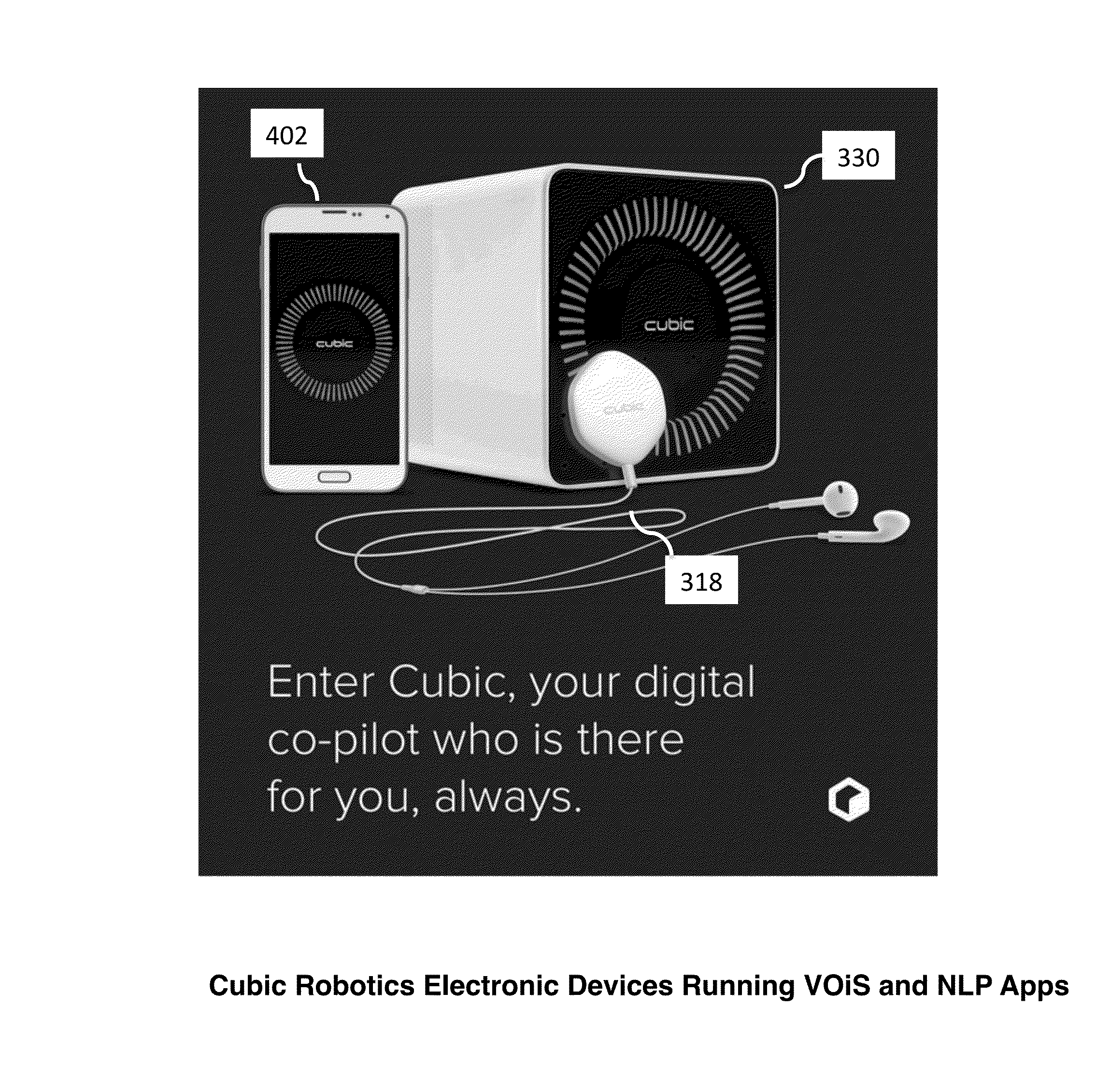Voice driven operating system for interfacing with electronic devices: system, method, and architecture
a voice-driven operating system and electronic device technology, applied in the field of humancomputer interaction, can solve the problems of system failure, development continued very slowly, and the real human-like interaction between a user and an electronic device remains very substantially restricted in the domain of human-like interaction
- Summary
- Abstract
- Description
- Claims
- Application Information
AI Technical Summary
Benefits of technology
Problems solved by technology
Method used
Image
Examples
Embodiment Construction
[0082]The present disclosure describes an NLP system, VOiS, that can carry on a human and electronic device dialog with many related interactions over a period of time. The system uses a hypothesis based detection and refinement architecture which constantly and incrementally processes speech input using a set of response engines which respond to the history of previous dialog inputs and responses.
[0083]VOiS supports both utility (template driven) and conversational response engines running in parallel at a core architectural level, not as an architectural add-on. The systems intelligence in based on several “Response Engines”, all of which operate in parallel. A key feature is the ongoing maintenance of numerous hypotheses which are constantly being updated. Each engine may be built to fulfill a separate goal, style or task, and be based on a different technology approach.” Each engine constantly contributes new hypotheses, all of which are ranked and sorted, leading to the next re...
PUM
 Login to View More
Login to View More Abstract
Description
Claims
Application Information
 Login to View More
Login to View More - R&D
- Intellectual Property
- Life Sciences
- Materials
- Tech Scout
- Unparalleled Data Quality
- Higher Quality Content
- 60% Fewer Hallucinations
Browse by: Latest US Patents, China's latest patents, Technical Efficacy Thesaurus, Application Domain, Technology Topic, Popular Technical Reports.
© 2025 PatSnap. All rights reserved.Legal|Privacy policy|Modern Slavery Act Transparency Statement|Sitemap|About US| Contact US: help@patsnap.com



